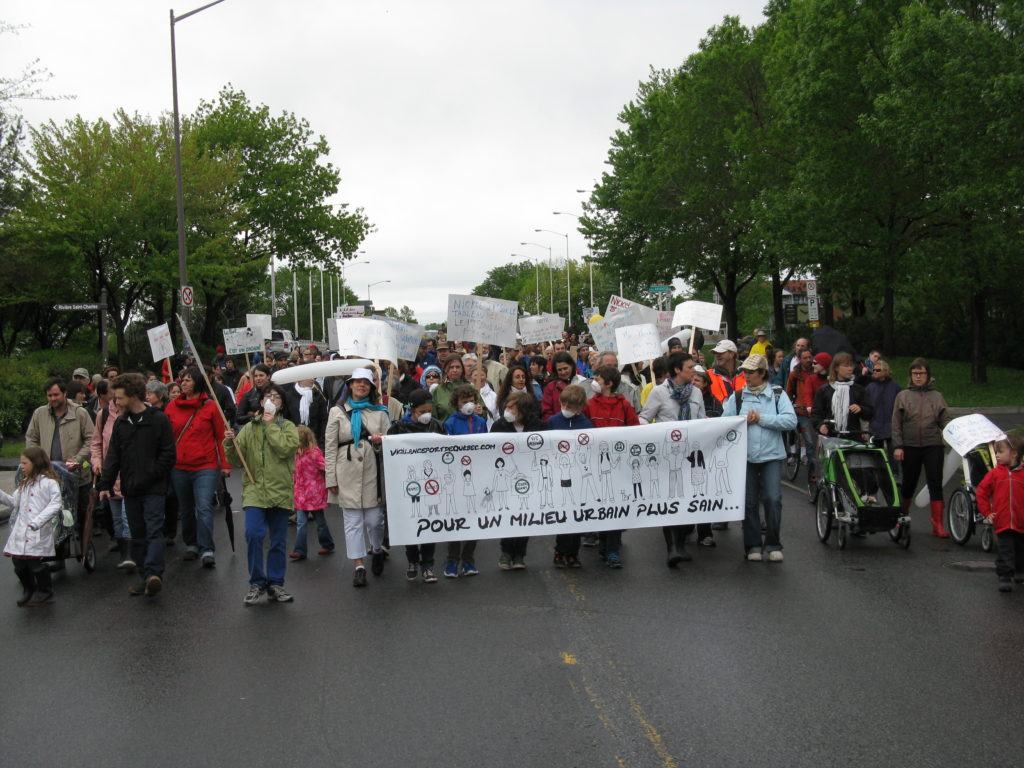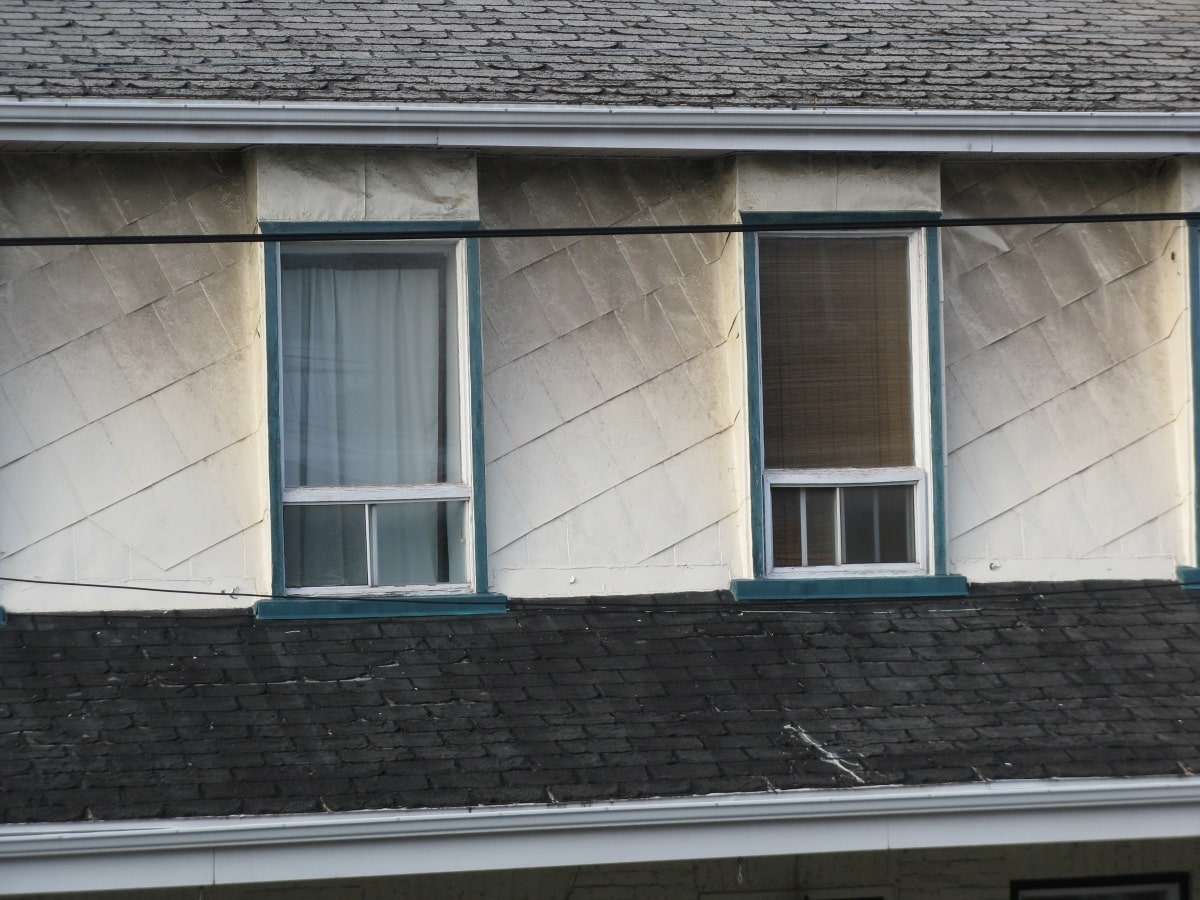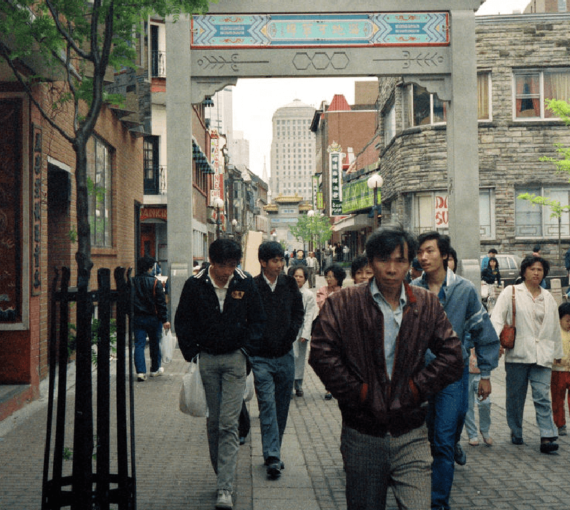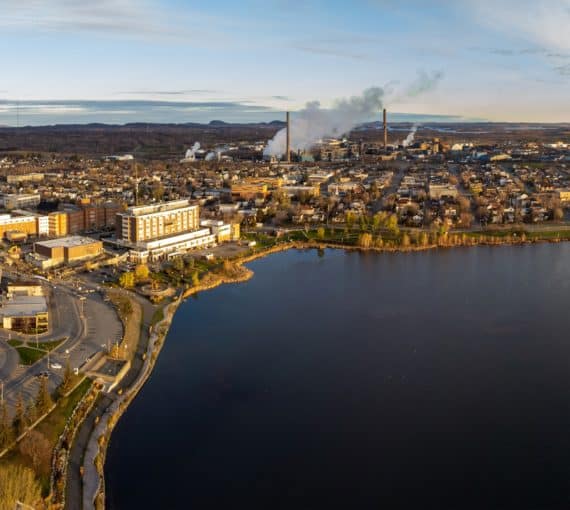
The Vigilance Port de Québec Citizens' Initiative. (Photo: Vigilance Port de Québec)
Interview with Véronique Lalande, Vigilance Port de Québec co-founder and spokesperson
Note: This English translation, including quotations, is from a French original.
When Véronique Lalande moved into the working-class neighbourhood of Limoilou in 2010, she was committed to restoring an old house to its former glamour and dedicating herself to the modest lifestyle of a borough where 3rd Avenue pedestrians had charmed her with their friendly greetings. A mother of a young child, she settled down in the area, but was quickly alarmed by particles of dust regularly collecting in thick layers on all exterior surfaces.
After spending the previous day removing accumulated grime in her yard and on her house, on October 26, 2012, Véronique awoke to yet another layer of dust, even thicker than before, covering her property. She walked down the block with her baby and was frightened to discover he also had a layer of red dust on his hands — as did the wheels of the stroller, the surface of her shoes, the sidewalk, the cars and all the balconies nearby. This last straw catalyzed a grueling political fight that, after a decade, is still going.
A mother of a young child, she settled down in the area, but was quickly alarmed by particles of dust regularly collecting in thick layers on all exterior surfaces.
Véronique assumed the dust originated from the City of Quebec incinerator, but an Environmental Emergency Services employee said “it is common knowledge that the biggest polluter of the area is the Port of Quebec” but unfortunately, “no one dares oppose it.”
The dust is from bulk shipments of powdered metals that spew particles into the air, where they remain suspended and are spread across Limoilou by prevailing winds. Of the 25 to 30 million tonnes of raw materials that transit through the port every year, approximately 50 per cent are mining products: iron, copper, zinc, nickel, etc. Véronique observes that her neighbours, contrary to what Environmental Emergency Services believes, are aware of the dust particles, but almost no one in the area knows where they come from or what they are.
The only result of Véronique’s Google search for “Limoilou dust” was a poem. Although the dust was not yet a subject of public discussion at the time, she noticed this marginalized neighbourhood’s long-ignored communities are not indifferent to the pollution. What has maintained the status quo since the port’s expansion toward Limoilou in the 1960s is the abyss between her neighbours and the municipal, provincial and federal institutions failing to protect their health, the inaccessibility of relevant data and the common misconception that activism is not the strong suit of those with sometimes only a Grade 7 education. “Taking action first requires gaining knowledge: it means understanding the ongoing issues in your neighbourhood and their impacts,” Véronique said. “One can either endure, run away, or fight.”
The quantities found in the borough exceeded by far those observed in hyper-industrialized cities where nightmarish pollution is omnipresent — conflicting with the perception of Quebec as a green city.
Along with her partner, who is a scientist, Véronique began the crucial process of documentation. An independent analysis of samples collected from the neighbourhood uncovered an unsettling reality: while the average concentration of nickel particles in the air is around one nanogram per cubic metre in Canada, it reaches an average 52 in Limoilou with daily peaks of up to 1,670. The World Health Organization estimates that, to minimize health hazards, the threshold of nickel concentration in the air is three ng/m3.
The quantities found in the borough exceeded by far those observed in hyper-industrialized cities where nightmarish pollution is omnipresent — conflicting with the perception of Quebec as a green city.
Residents began mobilizing at a larger scale, eventually creating the citizen group Vigilance Port de Québec. Forced to fight for their voices to be heard and taken seriously when they denounced the reckless endangerment of their health, group members appealed to all appropriate administrative branches via myriad bureaucratic procedures. Of her multiple discussions with the Public Health Department, Véronique said, “They would frequently tell us ‘Yes, but our duty is to reassure the population.’ But that is not their duty — they don’t have to appease us, they have to inform us! If the information is reassuring, people will be reassured. If I am not aware that something is happening and I am not informed of its impacts on my life, my fundamental right to take action and mobilize with my neighbours and friends for change will have been stripped away!” For her, knowledge is the foundation of community power.
For her, knowledge is the foundation of community power.
This right to take action based on accessible and reliable data has since been harnessed by Limoilou’s approximately 50,000 residents, allowing them to gain significant ground. “One of our class action suits forced Arrimage Québec [the company responsible for the dust debris] to pay millions of dollars for the dust they generated on October 26, 2012,” Véronique said. “At the beginning of the lawsuit, they secretly offered us $600 cheques —$200 to our less educated neighbours. This was utterly shocking — they laughed at us in court.”
Although her motivation sometimes wavers and her activism is extremely time-consuming, no victory is too small for Véronique. “It may seem trivial, but it was a win for us when the tribunal confirmed that what happened was their fault and ordered them to pay every citizen $100 to $200” — more so because the cheques arrived at the beginning of the COVID-19 pandemic, a period of great financial uncertainty.
Despite it all, the war is not yet won. “Uncontestably, the stricter standards regarding nickel concentration that we obtained right at the beginning were for us an immense victory,” Véronique said. “We went from a proposed norm of 12 ng/m3 to an actually acceptable norm with a daily peak limit that corresponded to the strictest standards and prioritized public health.
“But the fight is never really over. The industry started to lobby again in 2013 and despite robust opposition from many different groups in Quebec — including the Quebec Association of Doctors for the Environment, the Association of Medical Doctors, the Order of Chemists, citizen collectives and environmental groups — the norm was increased.”
It’s clear that the problem lies in companies and institutions gatekeeping knowledge, and not in the presupposed incapacity of local communities to grasp issues that affect them daily.
Nevertheless, in recent years Vigilance Port de Québec successfully opposed a port expansion project, at which point Limoilou residents seemed to become an unstoppable force. Véronique repeatedly highlights that the collective power of communities comes to life once information is available. “A lot of people re-appropriated the conversation, became outspoken for the first time and mobilized intelligently. I hear them, and they are perfectly able to debate thoughtfully and master all these concepts.”
It’s clear that the problem lies in companies and institutions gatekeeping knowledge, and not in the presupposed incapacity of local communities to grasp issues that affect them daily.
Nearly a decade after October 26, 2022, a Google search now yields 21,000 results for “Limoilou dust.” If the war is not yet won, Limoilou residents certainly emerged victorious from many battles and fortified collective solidarity.




